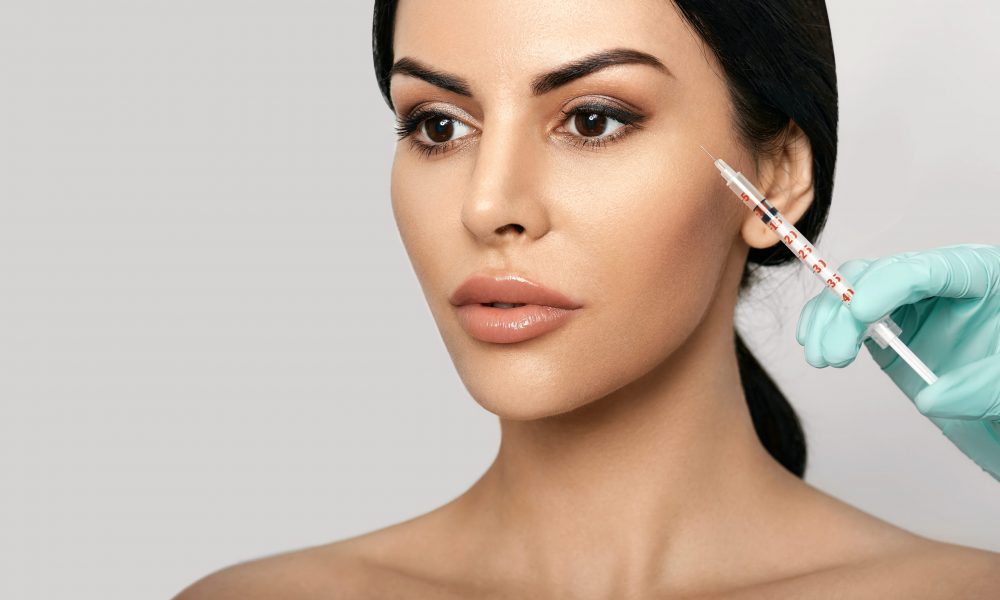Botox is a widely known brand of botulinum toxin injections that affect nerves and cause muscle weakening. In fact, a person can get a botulinum toxin injection for cosmetic or medical reasons, wherein it is injected in small amounts into specific muscles to smooth wrinkles, prevent migraine headaches and treat many other health conditions. Botox is safe and has minimal side effects when used appropriately in a therapeutic context.
How Does Botox Work?
Botox’s main job is to block nerve signals to muscles, which results in the injected muscles not contracting (tense up). Although these effects are always temporary, they can last for several months. Depending on the primary area of concern, several areas can be treated in one session.
What Benefits Does Botox Provide?
Botox provides several benefits and a few main ways to make the most from the treatment, whether one wishes to revitalize the look, prevent the aging signs, or use Botox for medicinal purposes, including:
Speed and Efficiency
One attractive aspect of Botox is that it simply takes a few minutes to administer and produces results in only a few days. Botox is a “quick-fix” solution that gives the patients a refreshed appearance in just a few minutes, which can be done between lunch breaks or errands. In fact, these advantages also make Botox a cost-effective anti-aging treatment compared to other anti-aging therapies, making it a popular choice.
Safe Procedure
Unlike other cosmetic procedures that may necessitate surgery or different intrusive approaches as an injectable treatment, Botox is far less scary. In most cases, significant side effects or extensive recovery times aren’t mostly experienced, including the highly minimal serious problems.
Various Uses
Botox is used for various treatments as its other significant benefit. Although it is primarily known to help anti-aging and reduce the look of the lines and wrinkles, its uses are limitless. In fact, Botox is also treated for TMJ, Hyperhidrosis, and migraines.
Long-Lasting results
The results are longer-lasting for patients undergoing the Botox treatment when generally performed every 3-4 months, but note that it is not a permanent procedure. Still, patients must be responsible for selecting competent, experienced, and knowledgeable service providers to ensure long-lasting results. More importantly, the professionals undertaking this procedure should be highly qualified and certified.
Effective Procedure
On the cosmetics side, Botox is a popular treatment for facial wrinkles around the eyes and lips. Typically, it is used to cure lines around the eyes and between the brows, but it treats the lines around the mouth from laughing. Botox can help reduce the look of lines and wrinkles while preventing them from worsening.
No Adverse Effects
Botox has had only a few recorded adverse effects, and most people have none. The primary ingredient in Botox is Botulinum toxin A, a refined toxin that poses no danger of botulism and is entirely harmless. As a matter of fact, the FDA has also approved the procedure for aging signs and other conditions.
No-risk Procedure
The possibility of complications is none since the procedure is non-surgical. Unlike other non-surgical treatments with side effects, Botox is one of the safest, with which symptoms will fade gradually with no long-term consequences or difficulties.
How Is Botox Used?
Typically, this procedure is known to reduce the appearance of wrinkles and fine lines. For example, Botox injections can relax the muscles that cause:
- crow’s feet, or wrinkles that appear at the outer corner of the eyes
- frown lines between the eyebrows
- forehead creases
Not only that, Botox (onabotulinumtoxinA) is a prescription medication with a variety of uses that is also approved by the Food and Drug Administration (FDA) to:
- treat severe axillary Hyperhidrosis in adults;
- prevent headaches in adults with chronic migraine;
- treat cervical dystonia in adults;
- treat strabismus in adults and certain children;
- treat spasticity in the upper or lower limb in adults and certain children;
- treat blepharospasm, which is the medical term for the uncontrollable blinking or twitching of the eyelids in adults and certain children;
- treat strabismus in certain children and adults
- Treat bladder problems, including neurogenic detrusor overactivity in certain children and adults with certain conditions and urinary incontinence.
In addition, Botox is given by injection into different body parts, depending on the treated condition. The doctor or other healthcare professional will do the injections. In most cases, Botox injections are given every 12 weeks on a long-term basis.
What Possible Side Effects Are Common With Botox?
Botox is a neurotoxin that has the ability to relax muscles, and patients should be aware that by using these injections, they are at risk. Depending on which condition is being used to treat, the side effects of Botox can vary. Hence, the following are some of the more common side effects reported by people who used Botox in studies.
- neck pain
- headache
- pain or bleeding at the injection site
- sweating in other parts of the body
- pain in the hands or feet common in adults
- upper respiratory infection like the common cold (in children)
- drooping eyelid
- dry eyes
- urinary tract infection (in adults and children)
- urinary retention (in adults)
- trouble swallowing
On the other hand, below are examples of mild side effects that have been reported with Botox used for any condition, including:
- sore throat
- itching
- muscle weakness close to the injected site
- flu-like symptoms such as achy muscles, nausea, and fever
- constipation
- pain in the hands or feet
- fatigue
- joint or back pain (in adults)
- bronchitis (in adults)
- dizziness
- dry mouth
- double vision
- irritated, red, or watery eyes
- being more sensitive to light
- swollen eyelid
Also, below are some serious effects that have been reported with Botox include:
- corneal ulceration (an open sore on the eye surface) in adults and children when used for blepharospasm
- urinary retention in adults for bladder problems
- allergic reaction
- spread of toxin effects
What Are Its Precautions?
Before taking this medicine, Botox should not be given if allergic to botulinum toxin or when having an infection in the area where the medicine will be injected and for those having a current bladder infection or unable to urinate and are not routinely using a catheter.
To make sure Botox is safe, patients must tell the doctor in case they have ever had the following:
- a breathing disorder such as emphysema or asthma;
- problems with swallowing;
- a change in the normal appearance of the face;
- amyotrophic lateral sclerosis (ALS) or also known as “Lou Gehrig’s disease”;
- a side effect when using botulinum toxin before;
- bleeding problems;
- problems with swallowing;
- myasthenia gravis;
- Lambert-Eaton syndrome;
- facial muscle weakness like droopy eyelids, trouble raising the eyebrows, and weak forehead
- surgery (especially on the face)
- other botulinum toxin injections like Dysport or Myobloc (especially in the last four months).
Bottom Line
As the top non-surgical cosmetic procedure in the United States, Botox is available mainly in many clinics. Key Wellness, PLLC provides Botox, a neuromodulator that works wonders on facial aging when one begins to lose their skin’s firm, a fresh, youthful condition due to aging. Imagine yourself looking younger, better rested, and rejuvenated without surgery.





